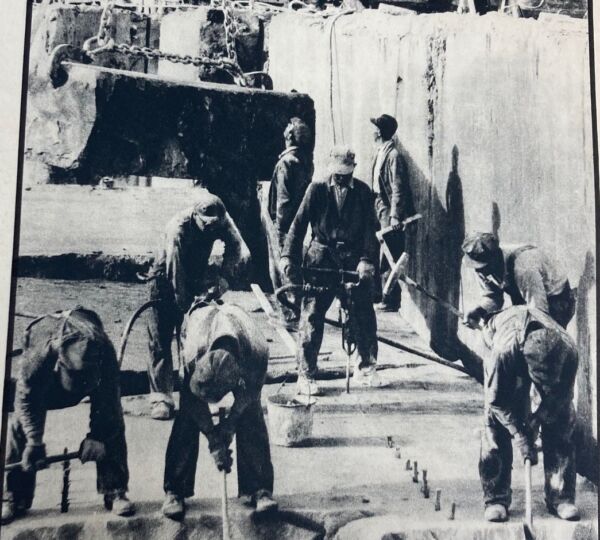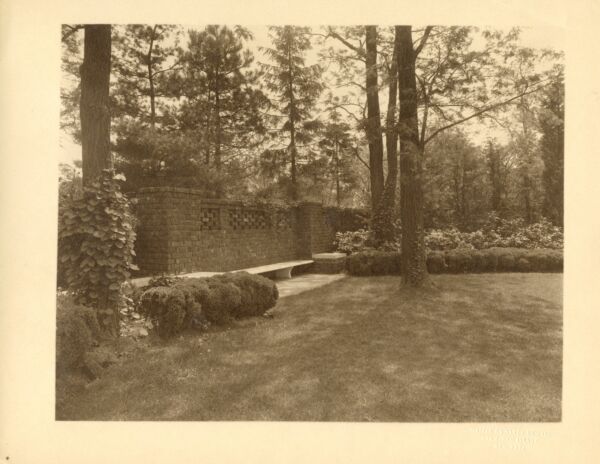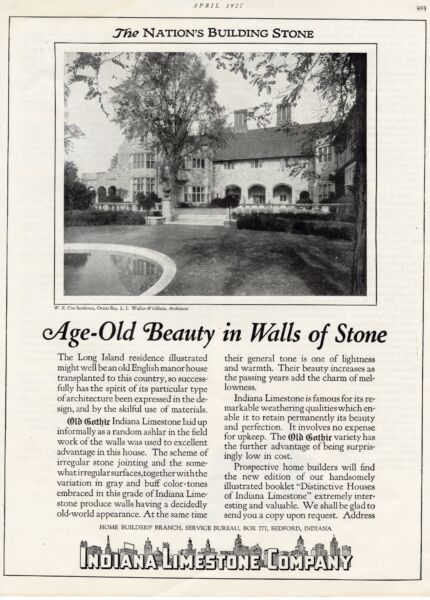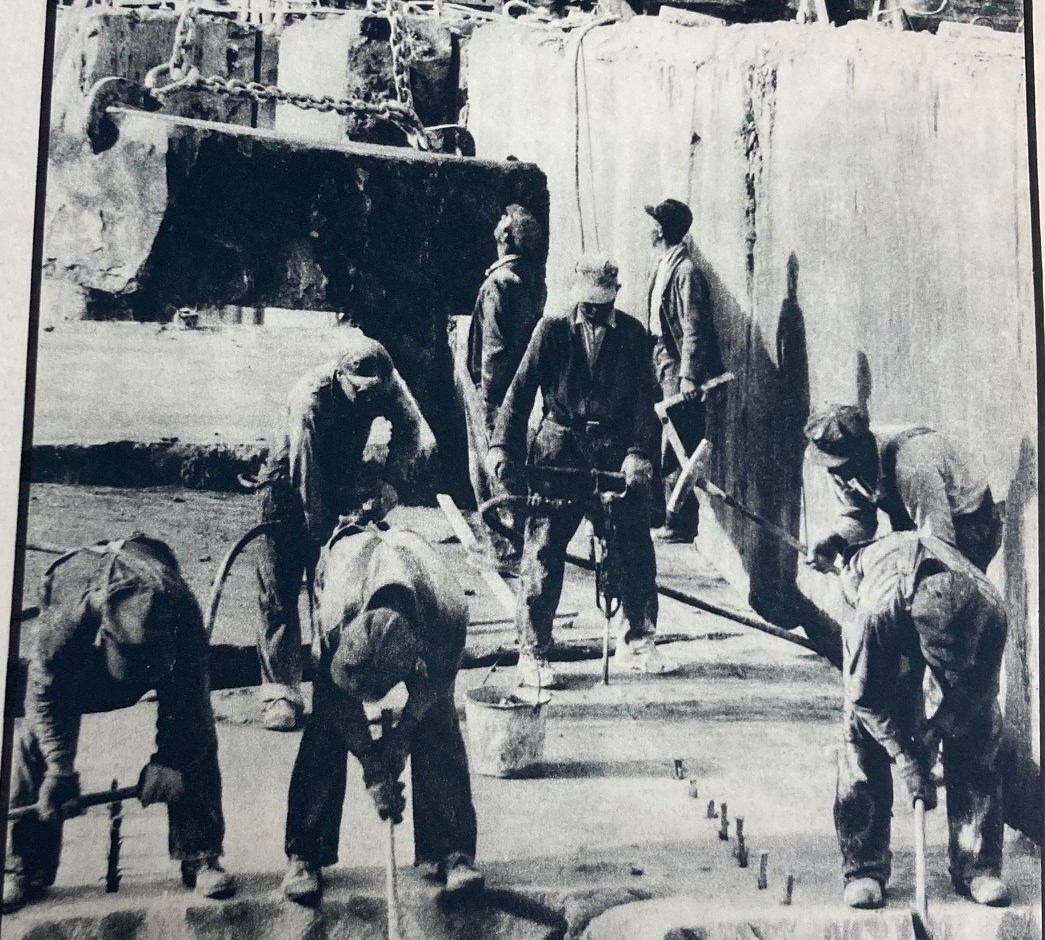When you look at the Main House do you think of the sea?
The deep sea and its inhabitants may not be your immediate association, however the limestone—the material that makes up the house—was derived from an ancient inland sea located in present-day Indiana. The calcium carbonate from the shells of the marine life that once dwelled in this sea formed a deposit of oolite, also known as limestone. Indiana’s prolific quarry produced limestone for the Empire State Building, the Pentagon, the National Cathedral, and the Biltmore Estate in Asheville, North Carolina.
 Workers chiseling slabs of limestone (80’ long x 4’ wide x 12’ deep) into smaller blocks. Fortune magazine, September 1931, Planting Fields Foundation Archives.
Workers chiseling slabs of limestone (80’ long x 4’ wide x 12’ deep) into smaller blocks. Fortune magazine, September 1931, Planting Fields Foundation Archives.
Over-burnt or “lammie” brick was the original choice for the Main House. Brick would have honored the original house by Grosvenor Atterbury designed for the Byrnes (and later the Coes) that burned down in 1918 and necessitated a new house. Lammie brick was often overlooked and considered imperfect, but architects like Atterbury found the inherent beauty of its texture and color variations ideal for his work at Planting Fields, the original Parrish Museum in Southampton, and Forest Hills Gardens in Queens to name a few of his projects.
 Garden court wall made of lammie brick, a remnant of Atterbury’s vision, photographed by Mattie Edwards Hewitt, 1921, Planting Fields Foundation Archives.
Garden court wall made of lammie brick, a remnant of Atterbury’s vision, photographed by Mattie Edwards Hewitt, 1921, Planting Fields Foundation Archives.
However, architects Walker & Gillette, who Coe commissioned for the new house, located a supply of limestone that was originally intended for Bertram Goodhue’s St. Bartholomew’s Church in Manhattan. Coincidentally, Goodhue opted for brick instead of limestone for the church!
 Advertisement for Indiana Limestone Company, House Beautiful magazine, April 1927, Planting Fields Foundation Archives.
Advertisement for Indiana Limestone Company, House Beautiful magazine, April 1927, Planting Fields Foundation Archives.
 Letter to George Brown & Company, who specialized in stonework regarding the payment of the limestone along with the labor involved and overhead charges. May 29, 1918, Planting Fields Foundation Archives.
Letter to George Brown & Company, who specialized in stonework regarding the payment of the limestone along with the labor involved and overhead charges. May 29, 1918, Planting Fields Foundation Archives.
From Marie Penny, Michael D. Coe Archivist

